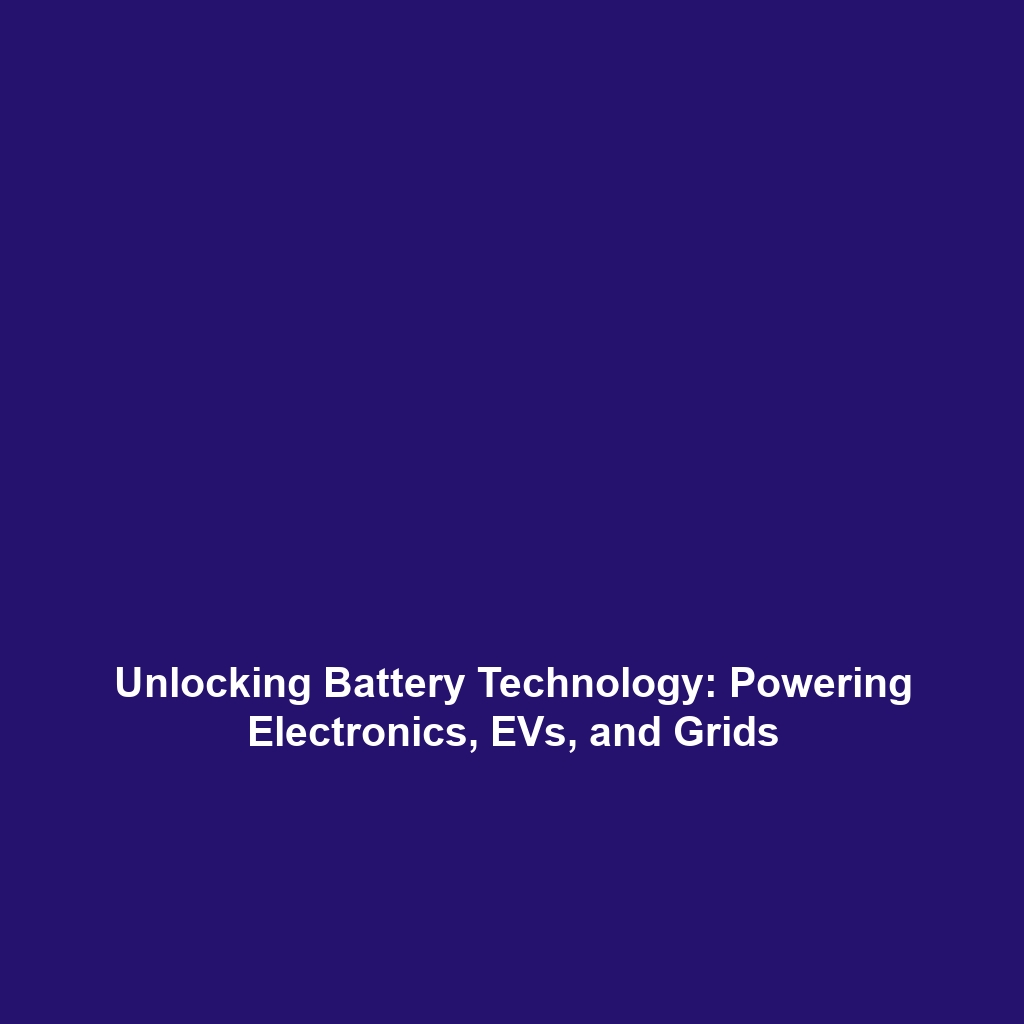Flow Batteries: Redefining Energy Storage in Battery Technology
Introduction
Flow batteries are gaining recognition as a key player in modern battery technology, primarily due to their unique capability to store energy in liquid electrolytes contained in external tanks. This design not only facilitates easy scaling of energy storage capacity but also enhances the longevity and efficiency of energy systems. In a world increasingly reliant on renewable energy sources, understanding flow batteries’ potential and functionality is essential for advancing energy storage solutions and addressing pressing energy challenges.
Key Concepts
Flow batteries are electrochemical cells where energy is stored in fluid electrolytes, offering numerous advantages over traditional solid-state batteries. Some of the primary concepts include:
Electrolyte Composition
The liquid electrolytes used in flow batteries can vary widely, featuring different chemical compositions suitable for specific applications. Commonly used electrolytes include vanadium, zinc-bromine, and iron-chromium solutions. This fluid composition allows for a more flexible scaling of energy storage capability, which is crucial in the growing renewable energy landscape.
Energy Density and Scalability
Flow batteries provide a lower energy density compared to conventional lithium-ion batteries; however, their scalability potential is unmatched. By simply increasing the size of external tanks, energy capacity can be easily adjusted to meet demand, making them ideal for large-scale applications such as grid storage.
Applications and Real-World Uses
Flow batteries find a variety of applications, significantly contributing to the field of battery technology. Key uses include:
- Grid Energy Storage: Flow batteries are utilized to balance supply and demand on electrical grids, especially during periods of high renewable energy production.
- Renewable Integration: They enable better integration of intermittent energy sources like wind and solar by storing excess energy for later use.
- Microgrid Solutions: Flow batteries serve as a reliable storage solution for microgrids, providing resilience and energy independence in remote areas.
These applications demonstrate how flow batteries are used in the broader category of battery technology, showcasing their importance in energy management.
Current Challenges
While flow batteries present exciting opportunities for energy storage, several challenges exist:
- Cost: The initial investment for flow battery systems remains relatively high compared to traditional batteries.
- Energy Density: Flow batteries generally have a lower energy density than their solid-state counterparts, limiting their use in more compact applications.
- Material Durability: The longevity of the electrolytes can affect efficiency and operational costs over time.
Future Research and Innovations
Innovations in flow battery technology are on the horizon, foreshadowing significant improvements:
- Advanced Materials: Research into new materials may lead to higher efficiency and reduced costs in flow battery production.
- Hybrid Systems: The integration of flow batteries with lithium-ion systems is being studied to enhance overall energy storage capabilities.
- Automation and Monitoring: Smart systems for monitoring and optimizing flow battery performance are in development, potentially leading to smarter energy solutions.
Conclusion
Flow batteries present a transformative approach to energy storage, characterized by their unique design involving liquid electrolytes in external tanks. Their significant scalability potential positions them as a critical component in future battery technology developments. As research advances and challenges are addressed, flow batteries are likely to play an increasingly vital role in sustainable energy systems. For those interested in exploring more about battery technology, consider reading about lithium-ion batteries and renewable energy innovations.




